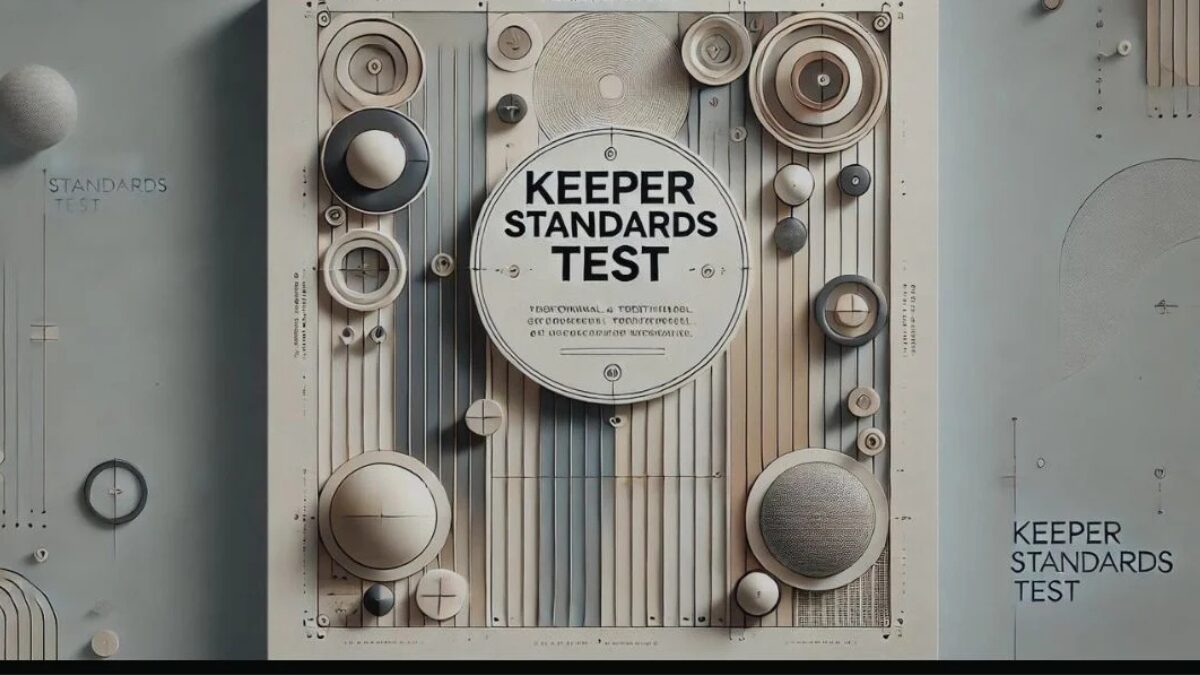Education
The Power of Joyous Laughter: Why It Matters and How to Embrace It

Laughter—it’s something we all do, but do we truly appreciate its value? From the chuckles shared with friends to the uncontrollable giggles that leave us gasping for breath, laughter is a universal experience that transcends language, culture, and age. But beyond the simple pleasure it brings, laughter has profound effects on our physical, mental, and social well-being. In this article, we’ll delve into why joyous laughter is so important and how you can bring more of it into your life.
Introduction
Understanding Joyous Laughter
Joyous laughter isn’t just about reacting to something funny. It’s an expression of genuine happiness, a release of energy that connects us with others and lightens our burdens. It’s the kind of laughter that bubbles up from deep within, often contagious, spreading smiles to everyone in the room. But why is it that this simple act can make such a huge difference in our lives?
Why Laughter is the Best Medicine
The phrase “laughter is the best medicine” isn’t just a catchy saying. It’s grounded in scientific fact. Laughter triggers the release of endorphins, the body’s natural feel-good chemicals, which promote an overall sense of well-being and can temporarily relieve pain. But there’s more to it than just feeling good; laughter also strengthens the immune system, boosts mood, and even protects against the damaging effects of stress.
The Science Behind Laughter
What Happens in the Brain When We Laugh?
When you laugh, your brain undergoes a complex series of reactions. It begins with the auditory system recognizing the sound of laughter, which then triggers a chain reaction in the brain’s reward system. This activates the release of dopamine, a neurotransmitter associated with pleasure and reward, creating a feeling of euphoria. Simultaneously, the amygdala, the part of the brain responsible for emotions, calms down, reducing stress and anxiety.
The Physical Benefits of Laughter
Beyond the brain, laughter has a cascade of physical benefits. It increases blood flow, which improves cardiovascular health. It also engages the diaphragm and abdominal muscles, giving your core a workout similar to that of light exercise. This is why, after a hearty laugh, you might feel physically energized and mentally refreshed.
How Laughter Impacts Mental Health
Laughter is a powerful antidote to stress, pain, and conflict. It lightens your burdens, inspires hope, and connects you to others. Regular bouts of laughter can significantly reduce anxiety and depression by decreasing levels of stress hormones like cortisol. It also improves your outlook on life, fostering a sense of optimism and resilience.
The Social Benefits of Laughter
Strengthening Relationships Through Shared Laughter
One of the most important social benefits of laughter is its ability to bring people closer together. When we laugh with others, we create a bond, a shared experience that fosters trust and intimacy. This is why friendships and romantic relationships often thrive on shared humor. Laughing together can break down barriers and smooth over conflicts, making it easier to navigate the ups and downs of life.
Laughter as a Universal Language
Laughter is often referred to as the universal language because it transcends cultural and linguistic boundaries. Whether you’re in Tokyo or New York, a laugh is understood and appreciated. This universality makes laughter a powerful tool for communication, especially in situations where words may fail.
The Role of Laughter in Teamwork and Collaboration
In the workplace, laughter can be an invaluable asset. Teams that laugh together are more likely to communicate effectively, think creatively, and solve problems collaboratively. Humor can diffuse tension during stressful projects, making it easier for team members to work together harmoniously. Moreover, a work environment that encourages laughter tends to foster loyalty and job satisfaction.
Joyous Laughter in Different Cultures
Laughter Traditions Around the World
Different cultures have unique ways of expressing and celebrating laughter. For example, in Japan, laughter yoga is a popular practice where groups gather to laugh as a form of exercise, promoting both physical and mental well-being. In some African cultures, laughter is used in rituals to ward off evil spirits and bring good fortune. Understanding these traditions can give us a deeper appreciation of how integral laughter is to the human experience.
The Cultural Significance of Laughter
In many societies, laughter plays a crucial role in social rituals and customs. It can signify joy, relief, or even nervousness, depending on the context. For example, in many Western cultures, laughter is often used as a coping mechanism during difficult times, serving as a way to lighten the mood and create a sense of solidarity. By exploring the cultural significance of laughter, we can learn how different societies view and use this powerful tool.
How to Incorporate More Laughter Into Your Life
Simple Ways to Laugh More Every Day
Incorporating more laughter into your life doesn’t require drastic changes—just small, intentional steps. Start by surrounding yourself with things that make you laugh, whether it’s funny movies, stand-up comedy, or silly pet videos. You can also try to find humor in everyday situations by looking for the lighter side of things. Remember, laughter is often spontaneous, but you can create the right environment to invite it more frequently.
Surround Yourself with Positive People
Your social circle has a significant impact on how often you laugh. Spend time with friends and family who have a good sense of humor and who make you feel comfortable enough to be yourself. Positive people who encourage laughter can help you navigate through tough times and make the good times even better.
The Importance of Not Taking Life Too Seriously
One of the biggest obstacles to laughter is taking life too seriously. While it’s important to be responsible, it’s equally important to recognize that not everything is within your control. Learning to let go of the little things and laughing at your own mistakes can lead to a much more joyful and stress-free life.
Laughter in the Workplace
The Role of Humor in a Productive Work Environment
A workplace that encourages humor and laughter is often more productive and enjoyable. Humor helps reduce stress, boosts morale, and fosters a positive atmosphere where employees feel valued and motivated. When employees can laugh together, it creates a sense of camaraderie that can improve teamwork and communication.
How Leaders Can Encourage Laughter in Teams
Leaders play a crucial role in setting the tone for laughter in the workplace. By modeling a healthy sense of humor and encouraging a lighthearted atmosphere, leaders can make it clear that it’s okay to have fun at work. This doesn’t mean sacrificing professionalism, but rather recognizing that a little humor can go a long way in making work more enjoyable and productive.
Balancing Professionalism and Humor
It’s important to strike the right balance between humor and professionalism in the workplace. While laughter can enhance productivity and workplace culture, it’s essential to ensure that humor is inclusive and respectful. Leaders and employees alike should be mindful of the context and the potential impact of their jokes to maintain a positive and professional environment.
The Healing Power of Laughter Therapy
What is Laughter Therapy?
Laughter therapy, also known as humor therapy, is a type of therapy that uses humor to promote overall health and well-being. This therapeutic approach helps people relieve stress, improve mood, and sometimes even manage pain. Laughter therapy can involve a range of activities, from watching funny movies to participating in laughter yoga.
Case Studies: Laughter Therapy in Action
Numerous case studies have shown the effectiveness of laughter therapy. For instance, patients with chronic illnesses often report reduced pain levels and improved mood after sessions focused on laughter. Another example is the use of laughter therapy in mental health treatment, where patients with anxiety and depression have experienced significant improvements in their symptoms.
How to Find a Laughter Therapy Group
If you’re interested in exploring laughter therapy, finding a group is a great first step. Many community centers, hospitals, and wellness organizations offer laughter therapy sessions. These groups provide a supportive environment where you can experience the benefits of laughter firsthand, guided by trained professionals.
Conclusion
Embracing Joyous Laughter in Daily Life
Incorporating more joyous laughter into your life is one of the simplest yet most powerful things you can do for your well-being. It doesn’t require any special skills or equipment—just a willingness to find humor in everyday moments and share that joy with others. Whether it’s through funny stories, playful banter, or simply allowing yourself to laugh at life’s absurdities, laughter can be a constant source of joy.
The Long-Term Benefits of a Life Filled with Laughter
Over time, the benefits of laughter accumulate, leading to a happier, healthier, and more connected life. By embracing laughter, you’ll not only improve your physical and mental health but also strengthen your relationships and enhance your overall quality of life. So, don’t wait—start laughing more today and reap the rewards for years to come.
Is it possible to laugh too much?
Answer:
While it’s rare, excessive laughter can sometimes cause physical discomfort, like muscle soreness or shortness of breath. However, for most people, the benefits of laughter far outweigh any minor downsides.
Can laughter help with chronic illnesses?
Answer:
Yes, laughter has been shown to help manage pain and improve the quality of life for people with chronic illnesses by reducing stress and promoting a positive outlook.
How can I laugh more if I’m going through a tough time?
Answer:
During tough times, finding humor might seem difficult, but it can be incredibly therapeutic. Try watching your favorite comedy shows, spending time with funny friends, or even joining a laughter yoga group to help lift your spirits.
Are there any negative effects of laughter?
Answer:
Laughter is generally very beneficial, but in rare cases, it can lead to complications for people with certain medical conditions, like asthma or heart problems. It’s always best to consult with a doctor if you have concerns.
What if I don’t find anything funny?
Answer:
If you struggle to find humor, start small by exposing yourself to different types of comedy or funny situations. Humor is subjective, and what makes you laugh might be different from others, so explore various options until you find what resonates with you.
Education
Oklahoma Safe Driving Laws you Need to Know

Oklahoma drivers take risks each time they get on the road. Fortunately, the state’s legislature has enacted several laws that keep the public safe. The following are some of Oklahoma’s safe driving laws.
No Distracted Driving
Distracted driving is any activity that takes the driver’s attention away from the road. Shifting focus on something else can be dangerous even if the driver only does it for fewer than 10 seconds. Not only does distracted driving increase the risk of a collision, but the driver may be forced to make a sudden maneuver that may violate other traffic laws. For example, a driver who is distracted may miss a red light and be forced to illegally proceed through the intersection. Examples of distracted driving include:
- Eating
- Drinking
- Texting
- Talking on the phone
- Focusing on other people in the vehicle
Moving Over for Emergency Vehicles
Oklahoma law requires drivers to change lanes when they see a vehicle with flashing lights on the side of the highway. If moving over is physically impossible, drivers are required to slow down. The objective of the “Move Over” law is to protect emergency workers, maintenance crews, and people who are on the side of the road receiving assistance. Drivers who violate the law may face fines from $1,000 for a first offense to $2,500 for second-time offenders.
Required Protective Gear for Motorcyclists
Motorcyclists in Oklahoma are only required by law to wear a helmet if they are younger than 18. However, state law does require all motorcycle riders to use eye protection. Motorcycle owners have options when it comes to complying with law. Eye protection can be goggles, glasses, or a windscreen on the motorcycle. Other motorcycle safety requirements restrict the height of motorcycle handlebars to being no higher than eye level. The state also requires every motorcycle to be equipped with a compliant horn.
Yielding the Left Lane
A unique law that many other states do not have is Oklahoma’s Left-Lane Law. The statute limits use of the left lane to drivers who want to make a pass to overtake another vehicle and vehicles that have to change lanes to avoid construction and emergency vehicles. Drivers may also use the left lane if traffic conditions create the necessity to change lanes.
Following Oklahoma’s safety laws significantly reduces the likelihood of drivers becoming involved in an accident. Beyond improving road safety, traffic laws reduce congestion and eases the daily commute for drivers, motorcyclists, truckers, and pedestrians.
Education
Florida Distracted Driving Laws

States across the U.S. compete with one another to impose the stiffest penalties on those apprehended for driving under the influence (DUI) or driving while intoxicated (DWI). Rightly so, given the 13,000 to 14,000 deaths annually that can be attributed to drunk driving. Yet these tough sanctions beg the question: what is the point of being sober if the driver’s attention is not on the road in any case? States like Florida have considered this subject and answer with stern legal discipline for distracted driving. After all, a driver in full possession of wits is nonetheless a danger when the mind is inattentive.
While distracted driving is rooted in varied sources, the law in the Sunshine State applies to specific behaviors that give solid evidence to the charge of distraction. In passing provisions against distracted diving, the state legislature understood that there were three categories of diversion from responsible automobile operation.
- Manual distraction: When the driver removes hands from the steering wheel to perform another task.
- Visual distraction: When the driver directs sight to something other than the road and surrounding traffic.
- Cognitive distraction: When the mind is pre-occupied and absent from the moment.
The “Put It Down” Law
The Wireless Communications While Driving Law passed in 2019. It stipulates, among other things:
- Drivers are forbidden to type into a wireless device while the vehicle is in motion.
- Drivers may not read texts or emails on any device while the car or truck is in motion.
- Law enforcement officers are directed to apprehend and cite drivers who are seen doing the above.
This law covers acts of cognitive, manual and visual distraction which must be testified to by the intercepting officer. Texting and emailing from a smartphone, android or other handheld device are two of the most common practices that embrace all three categories. Drivers caught violating the texting while driving law can receive increasing fines and points on their driver’s license that could lead to a suspension.
Exceptional Circumstances
There are exemptions from this law for certain persons and under certain conditions.
- Emergency services personnel and first responders — in the course of their official duties — need to remain in immediate touch with one another and with those who need assistance.
- Drivers who observe potentially dangerous or criminal acts can notify the police with mobile devices.
- Drivers may consult their devices for GPS and navigation assistance.
- Drivers can make voice-activated hands-free calls with their devices.
- Drivers may text and email while riding in a self-driving automobile.
Other Forms of Distracted Driving
Governments can pass statutes relating to cell phones and electronic devices because such behavior is visible and verifiable. Yet there are other distractions that also impact dedicated attention to the road. Children in the back seat; eating while driving; “rubbernecking” at other drivers or accidents; self-grooming; finding a radio station; and managing an unsecured dog or cat can all demand the driver’s concentration to the detriment of safe driving.
Education
Raise Your Game with the Keeper Standards Test

In the fast-paced world of soccer, goalkeepers are the unsung heroes who often hold the fate of a match in their hands. While strikers and midfielders may bask in the limelight, it’s the goalkeepers who bear the weight of the team’s defense. But how do we ensure that these pivotal players meet the necessary standards? Welcome to the world of the Keeper Standards Test—a comprehensive benchmark designed to evaluate and enhance the skills of goalkeepers.
A Brief History of Goalkeeping
The role of the goalkeeper has evolved significantly over the years. Early on in soccer history, goalkeepers were mainly responsible for stopping shots. However, as the game became more sophisticated, their role expanded. Modern goalkeepers must not only excel in shot-stopping but also possess excellent footwork, communication skills, and the ability to read the game. This evolution has paved the way for formalized testing methods to ensure keepers are up to scratch.
In the earlier days, goalkeepers relied heavily on instinct and raw talent. With limited specialized training techniques, many relied on natural ability and experience gained from match play. The advent of coaching methodologies and advanced training tools brought about a shift towards a more structured approach. The introduction of the Keeper Standards Test has become an essential tool in setting benchmarks for aspiring goalkeepers.
Today, goalkeepers are often the most analyzed and scrutinized players on the pitch. With the Keeper Standards Test, clubs and academies have a reliable method to assess where their keepers stand and identify areas of improvement. This makes it a crucial part of the developmental process for goalkeepers at all levels.
What is the Keeper Standards Test?
The Keeper Standards Test is a comprehensive evaluation encompassing various aspects of goalkeeping performance. It assesses technical skills, physical fitness, cognitive ability, and mental resilience. By providing a structured framework, the test helps identify strengths and weaknesses, allowing for targeted training and development.
The test is divided into several key components, each designed to measure specific aspects of goalkeeping. These components range from basic shot-stopping techniques to advanced game-reading abilities. By breaking down the role into these elements, the Keeper Standards Test provides a holistic view of a goalkeeper’s capabilities.
One of the unique features of the Keeper Standards Test is its adaptability. Whether you’re a beginner or a seasoned professional, the test can be tailored to suit your level. This flexibility ensures that it remains relevant across various levels of play, making it a valuable tool for coaches and players alike.
Importance of Setting Standards
Setting standards in goalkeeping is essential for several reasons. First and foremost, it provides a clear benchmark for performance. By establishing what is expected, goalkeepers have a target to aim for, which can drive motivation and improvement.
Secondly, clear standards help coaches and trainers identify areas of weakness. With a structured evaluation process, it’s easier to pinpoint specific skills that need attention. This targeted approach allows for more efficient training, leading to better results on the field.
Finally, setting standards promotes consistency across different levels of play. From youth teams to professional clubs, having a uniform standard ensures that goalkeepers are evaluated fairly and accurately. This consistency is crucial for maintaining the quality of goalkeeping talent across the board.
Breaking Down the Test
The Keeper Standards Test can be broken down into several key components. Each section focuses on a different aspect of goalkeeping, ensuring a comprehensive evaluation. Let’s take a closer look at what each component entails.
Technical Skills
Technical skills form the foundation of a goalkeeper’s performance. This section of the test evaluates essential skills such as shot-stopping, handling, and distribution. By assessing these abilities, coaches can ensure that their goalkeepers possess the fundamental skills needed to excel.
Shot-stopping is often the most critical aspect of goalkeeping, and this section of the test places a heavy emphasis on it. Goalkeepers are assessed on their ability to make saves from various angles and distances, ensuring they are well-rounded in this crucial area.
Distribution, while not always associated with goalkeeping, is becoming increasingly important. The Keeper Standards Test evaluates a goalkeeper’s distribution accuracy, ensuring they can effectively start attacks and relieve pressure on their team.
Physical Fitness
Physical fitness is another critical component of the Keeper Standards Test. Goalkeeping requires strength, agility, and endurance, all of which are assessed in this section. By evaluating these physical attributes, the test ensures that goalkeepers are physically prepared for the demands of a match.
Endurance testing is a key part of this section, as goalkeepers must remain alert and focused throughout the entire game. This component assesses their ability to maintain performance levels over an extended period, which is crucial for success on the field.
Agility is also a significant focus. Goalkeepers are tested on their ability to move quickly and efficiently, ensuring they can respond to shots and crosses with speed and precision. This aspect of the test highlights the importance of agility training for aspiring goalkeepers.
Cognitive Ability
Cognitive ability is a crucial aspect of modern goalkeeping. The Keeper Standards Test assesses a goalkeeper’s decision-making, reaction time, and game-reading skills. By evaluating these cognitive attributes, the test ensures that goalkeepers can think quickly under pressure.
Decision-making is perhaps the most critical aspect of this section. Goalkeepers are constantly faced with split-second decisions that can determine the outcome of a match. This component assesses their ability to make the right call in high-pressure situations.
Reaction time is another key focus. Goalkeepers must be able to react quickly to shots and changes in play, and this aspect of the test measures their ability to do so effectively. Quick reflexes are essential for success between the posts.
Mental Resilience
Mental resilience is often overlooked but is a vital component of a successful goalkeeper. The Keeper Standards Test assesses a goalkeeper’s mental toughness, concentration, and ability to bounce back from setbacks.
Concentration is crucial for goalkeepers, as they must remain focused throughout the entire game. This aspect of the test evaluates their ability to maintain concentration, even under pressure.
Mental toughness is another key focus. The test assesses a goalkeeper’s ability to handle adversity and stay composed in challenging situations. This resilience is essential for success in the high-pressure world of goalkeeping.
Key Benefits of the Keeper Standards Test
The Keeper Standards Test offers several benefits for goalkeepers and coaches alike. First and foremost, it provides a clear and structured framework for evaluating performance. This clarity allows for targeted training and development, leading to improved results on the field.
Secondly, the test promotes consistency across different levels of play. With a standardized evaluation process, goalkeepers are assessed fairly and accurately, ensuring a level playing field for all.
Finally, the test helps identify areas of strength and weakness. By pinpointing specific skills that need attention, coaches can create tailored training programs that address individual needs. This targeted approach leads to more efficient training and better outcomes.
How to Prepare for the Test
Preparing for the Keeper Standards Test requires a comprehensive approach. Goalkeepers should focus on developing both their technical skills and physical attributes. By training in these areas, they can ensure they are well-prepared for the demands of the test.
Technical skills should be honed through regular practice and drills. Goalkeepers should focus on improving their shot-stopping, handling, and distribution, ensuring they have the fundamental skills needed to excel.
Physical fitness is another essential area of focus. Goalkeepers should engage in regular fitness training to improve their strength, agility, and endurance. This preparation will ensure they are physically ready for the demands of the test.
The Role of Coaches and Trainers
Coaches and trainers play a crucial role in the Keeper Standards Test. They are responsible for evaluating goalkeepers, identifying areas of improvement, and creating targeted training programs. By providing guidance and support, coaches can help their goalkeepers reach their full potential.
Trainers should focus on developing comprehensive training plans that address both technical skills and physical fitness. By creating tailored programs, they can ensure that goalkeepers are well-prepared for the demands of the test.
Coaches should also provide regular feedback and support. By offering constructive criticism and encouragement, they can help goalkeepers build confidence and improve their performance.
Conclusion
The Keeper Standards Test is an essential tool for evaluating and developing goalkeepers. By providing a structured framework for assessment, it ensures that goalkeepers possess the necessary skills and attributes to excel on the field. Whether you’re a goalkeeper or a coach, the Keeper Standards Test offers valuable insights and opportunities for growth.
In conclusion, the Keeper Standards Test is a crucial component of modern goalkeeping. By setting clear benchmarks and providing targeted training, it ensures that goalkeepers are well-prepared for the demands of the game. Whether you’re an aspiring goalkeeper or a seasoned coach, the Keeper Standards Test offers valuable insights and opportunities for growth. Consider implementing this test into your training regimen to see measurable improvements in your performance on the field.
1. What is the Keeper Standards Test designed to measure?
Answer:
The Keeper Standards Test is designed to evaluate a goalkeeper’s proficiency in technical skills, physical fitness, cognitive ability, and mental resilience. By assessing these areas, the test provides a comprehensive overview of a goalkeeper’s overall performance and readiness for high-level play.
2. How often should goalkeepers take the Keeper Standards Test?
Answer:
The frequency of taking the Keeper Standards Test can vary based on individual and team needs. However, it is generally recommended that goalkeepers undergo the test at least once or twice a year to monitor their development, identify areas for improvement, and track progress over time.
3. Can the test be customized for different levels of play?
Answer:
Yes, the Keeper Standards Test can be adapted to suit various levels of play, from youth leagues to professional settings. Adjustments can be made to the test’s difficulty or focus areas to ensure it is challenging and relevant to the specific level being assessed.
4. What are the main benefits of using a standardized test for goalkeepers?
Answer:
Using a standardized test, like the Keeper Standards Test, ensures consistency in evaluation, facilitates targeted training programs, and provides clear benchmarks for performance assessment. It enables coaches and players to identify strengths and areas needing improvement, thus enhancing development and performance outcomes.
5. What role do mental skills training play in preparing for the test?
Answer:
Mental skills training is essential for developing mental resilience, concentration, and decision-making abilities. Goalkeepers should incorporate mental conditioning into their training regimen to enhance their focus, composure under pressure, and ability to make quick, effective decisions during the test and in actual match scenarios.
-

 Marketing6 months ago
Marketing6 months agoUnlocking the Potential of FSI Blogs: A Comprehensive Guide
-

 Health8 months ago
Health8 months agoAnxiety: Causes and Solutions
-

 Blog9 months ago
Blog9 months agoThe Seating Arrangement Surprise: A Story About Sitting Next to a Scary Yakuza
-

 Blog9 months ago
Blog9 months agoUnderstanding Chancerne: Unveiling the Science Behind this Enigmatic Phenomenon
-

 Tech7 months ago
Tech7 months agoOprekladač: A Comprehensive Guide to AI Translation Technology
-

 Tech8 months ago
Tech8 months agoUnveiling the Wonders of divijos: Revolutionizing Our World
-

 Health7 months ago
Health7 months agoDiscover the World of Ztec100.com: Your Ultimate Guide to Tech, Health, and Insurance
-

 Business8 months ago
Business8 months agoUnderstanding Trading: Unveiling the Dynamics of Financial Markets





